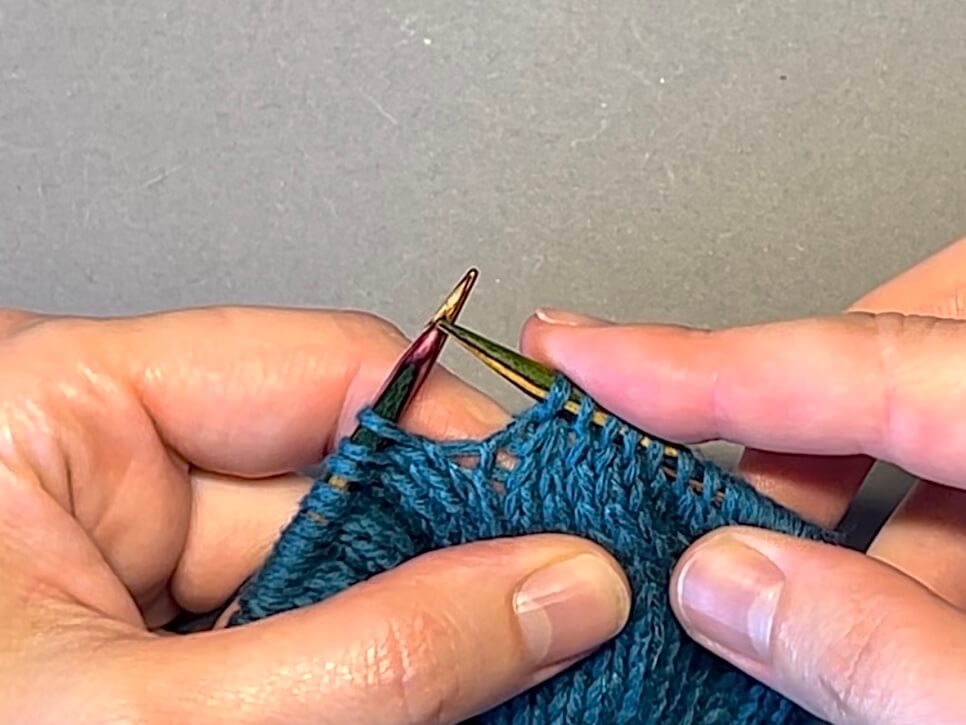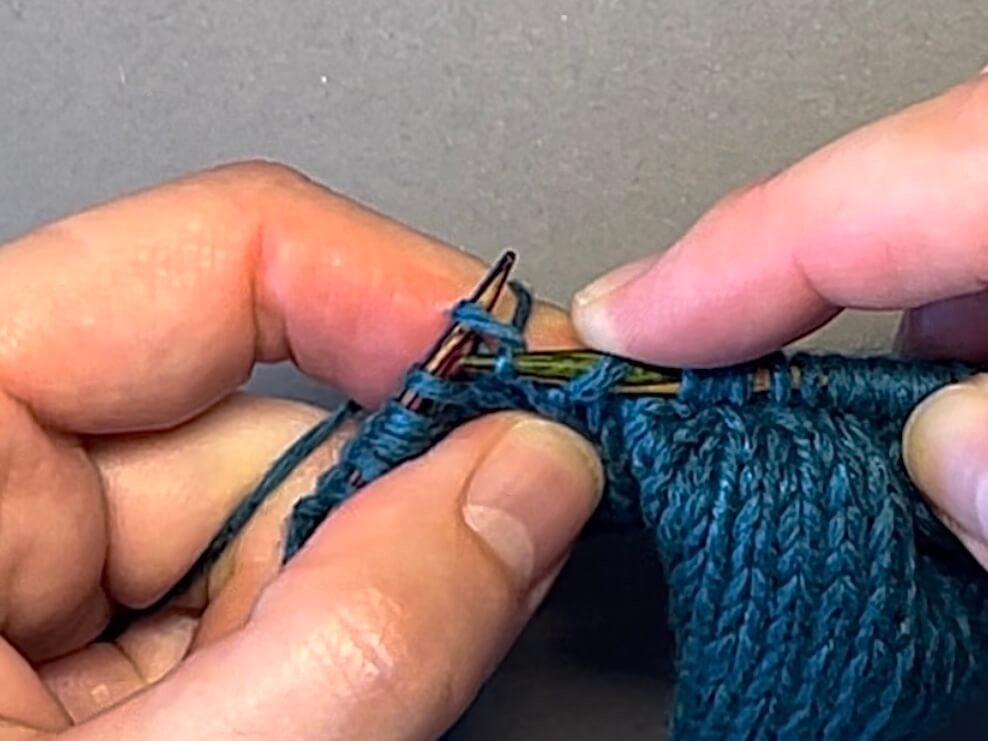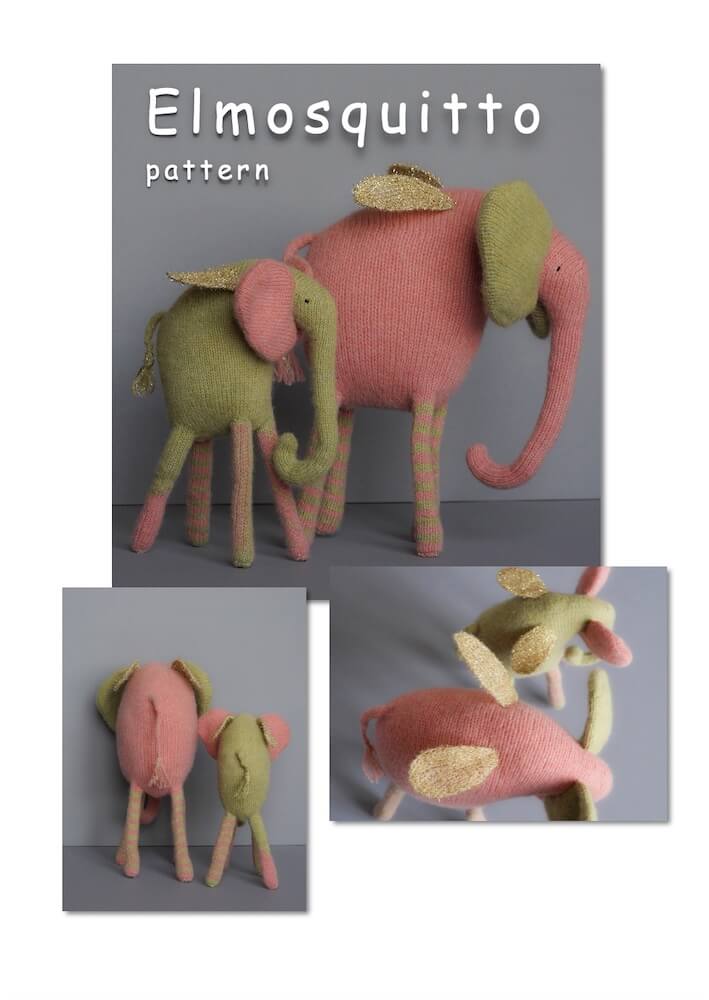Decreases in knitting
In this article, I will show the main types of single and double decreases.
Decreases are often used to narrow knitted fabric in the horizontal plane. This technique reduces the number of stitches by one or more.
Classification of decreases
Depending on how many stitches are decreased at the same time, decreases can be single, double, triple, etc.
Depending on the direction in which the fabric is narrowed, decreases are divided into left-leaning and right-leaning decreases. When decreasing an even number of stitches (for example, double decreases), they can be central.
This article covers the following types of decreases:
Single decreases:
Single right-leaning decrease
To make a single right-leaning decrease in a knit row, simply knit 2 stitches together. For this method of knitting decreases, the abbreviation K2tog is commonly used in literature.


This stitch will lean to the right:

Single left-leaning decrease
To make a single left-leaning decrease, you can use two methods:
First option – in the literature the abbreviation SSK is used – slip slip knit:
Insert the right needle into the first stitch as if to knit:

Slip it onto the right needle:

Slip the next stitch onto the right needle in the same way:

Return these 2 stitches to the left needle in the new position:

And knit them together:

Second option (alternatively, result will be the same) – in the literature the abbreviation SKP is used (slip, knit, pass over):
Insert the right needle into the first stitch as if to knit:

Slip it onto the right needle:

Knit the next stitch:


And pass it over the slipped stitch:


The result is roughly the same.
The second method is somewhat simpler, but it’s a matter of personal preference.

Double decreases:
Double right-leaning decrease
In the literature the abbreviation K3tog is used. Simply knit 3 stitches together:




Left stitch is on top, center – in middle and right – on bottom.
Central double decreases
They can be of two main types: the center stitch is in front and the center stitch is in back.
1. The center stitch of the 3 is in front (double decrease – DD or S2KP – slip, slip, knit, pass over)
Insert the right needle into 2 stitches together as if to knit:

And slip them onto the right needle:

Knit the third stitch:


And pass it over the 2 slipped stitches:


Center stitch is on top,
right – in middle,
and left – on bottom:

2. The center stitch of the 3 is in back.
In the literature the abbreviation SK2P ( slip, knit2, pass over) is used.
Insert the right needle into the first stitch as if to knit:

And slip it onto the right needle:

Knit the next 2 stitches together:


And pass the resulting stitch over the slipped stitch:


Right stitch is on top,
left – in middle
and center – on bottom:

Left-leaning double decreases
There are also a few methods, let’s consider a couple of the most popular:
1. SSSK (slip, slip, slip, knit)
Insert the right needle into the first stitch as if to knit and slip it onto the right needle:

Slip the second stitch as well:

And slip the third stitch as well:

Return all 3 stitches to the left needle in the new position:

And knit the three stitches together:

2. SSKP (slip, slip, knit, pass over)
Insert the right needle into the first stitch as if to knit and slip it onto the right needle:

Slip the second stitch as well:

Knit the third stitch:

And pass it over the 2 slipped stitches:


You can see that the resulting left-leaning decreases look almost identical to each other.
Right stitch is on top,
center – in middle
and left – on bottom:

I hope this material was useful and helped you quickly and easily master the techniques of decreases.
Enjoy knitting! 🧶
Sincerely, Tatiana.
SHARE






